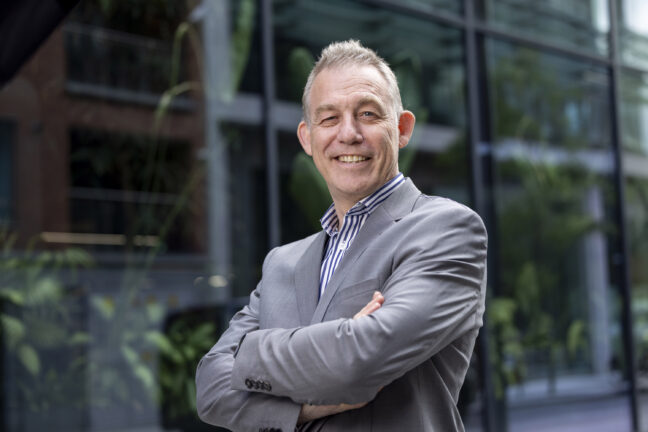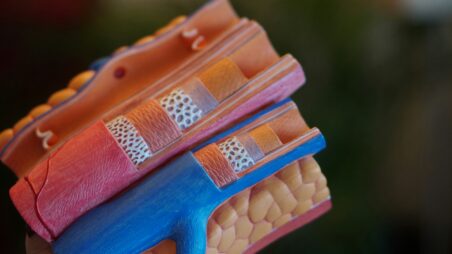A new European Commission study warns that scaling AI in healthcare will require more than scattered pilots. It will take coordination, standards, and investment. The report describes the challenge as “complex”. But it insists the rewards for patients, providers, and systems could be “transformative”.
To unlock that potential, Brussels has set out five priorities. These include building common standards for health data and interoperability, creating centres of excellence to pool expertise, and consolidating funding streams to accelerate deployment. A further focus is on ensuring real-world performance testing and post-deployment monitoring, and on establishing a central EU catalogue to help providers navigate the fast-growing supply of AI solutions.
“Through strategic action and a commitment to overcome deployment challenges, the EU can position itself as a global leader in AI-driven healthcare innovation,” the study concludes. But success will require “a collaborative effort involving policymakers, healthcare providers, developers, and patients”.
In this EU Perspectives interview, Graham Armitage, Director of Stakeholder Management at EIT Health and Managing Director of CLC Ireland-UK, explains how Europe can lead in healthcare AI.
You might be interested
What are the biggest barriers to scaling AI in healthcare across EU member states?
The barriers aren’t about technology, Europe has plenty of innovative start-ups. The real issues are access to quality data, integration into healthcare systems, and fragmentation in how tools are evaluated and procured.
Healthcare generates vast amounts of data, but much of it is siloed or inaccessible. This creates a risk that technology-based start-ups lacking academic and clinical support work only with the data they can easily reach, which may not be representative of the wider population. The European Health Data Space (EHDS) is critical here. By combining datasets across countries, EHDS can ensure AI solutions are built on data that reflect Europe’s diversity.
Skills are another barrier. Our data show that regions with AI startups combining technical skills with healthcare knowledge, regulatory understanding, and business expertise consistently deliver stronger results. Startups don’t just need coders; they need people who can test, integrate, and scale products inside real-world health services.
Finally, procurement is a huge challenge. While Europe has a unified system for approving devices as safe under the Medical Devices Regulation (MDR), reimbursement and value assessment still vary widely. That makes it hard for innovators to scale across borders. EIT Health coordinates the European Taskforce for Harmonised Evaluation of Digital Medical Devices, which is working to map differences and move towards a common framework. Even partial alignment would make it far easier for start-ups to expand, reach more patients, and improve their tools.
Which types of AI applications are making the most progress?
The startups advancing fastest are those that focus on real-world challenges rather than just technological breakthroughs. A joint report we published with EIT Digital, covering 23,000 professionals across 3,600 AI startups, showed that companies with balanced teams of tech experts, healthcare specialists, and people with soft skills—like communication and project management—consistently outperformed those relying on technical expertise alone.
It’s no coincidence that the Commission’s consultation on a European Cardiovascular Health Plan includes a dedicated section on AI. — Graham Armitage, Director of Stakeholder Management at EIT Health and Managing Director of CLC Ireland-UK
We’re seeing the most momentum in cardiovascular disease, which remains Europe’s leading cause of death. AI has real potential to improve prevention, diagnosis, and management of CVD. It’s no coincidence that the Commission’s consultation on a European Cardiovascular Health Plan includes a dedicated section on AI, recognising its potential to reshape how we approach heart health.
The Commission points to trust, interoperability, and infrastructure as critical bottlenecks. How is EIT Health addressing these?
We help innovators build solutions in collaboration with the full “knowledge triangle” of business, research, and education. This cross-border approach ensures that trust, ethics, and privacy are embedded from the start, and that interoperability is considered from day one.
Trust comes not only from regulatory approval but also from peer-to-peer validation. When clinicians across different countries and systems use and endorse a product, its credibility and uptake grow. Key opinion leaders play a crucial role here, helping to adapt tools to local contexts while validating their relevance internationally.
On infrastructure, we focus on human capital. Our evidence shows that start-ups succeed when they bring together diverse skillsets. Through training, mentoring, and networking, we help connect innovators to expertise across Europe, for example, a Spanish startup might find its perfect university partner in Sweden.
Large, well-capitalised companies are better equipped to navigate regulation, while early-stage innovators often risk delay or failure. — Graham Armitage
Europe already has world-class research and comprehensive healthcare systems; the challenge is connecting them. In Europe, fragmentation usually happens between health systems rather than individual providers, as it does in the US. If we can coordinate across systems, we can outcompete the US and China.
With the AI Act, the Medical Devices Regulation (MDR), The In Vitro Diagnostic Medical Devices Regulation (IVDR), and European Health Data Space (EHDS), how prepared are Europe’s health systems and startups to comply?
Europe starts from a strong base: world-class research and highly skilled healthcare professionals. But smaller startups face real challenges. Large, well-capitalised companies are better equipped to navigate regulation, while early-stage innovators often risk delay or failure.
The most effective support includes compliance mentoring, regulatory “sandboxes” to test products under real-world conditions, and alignment of regulatory interpretation across borders. EHDS will be a major enabler, but only if member states invest in high-quality, interoperable data infrastructure and build trust with patients and clinicians.
At EIT Health, we prepare innovators through training on data and regulatory readiness and by supporting cross-border data projects. We also coordinate work on common frameworks for evaluating digital medical devices, such as the EvalEUDMD project, which helps ensure assessment becomes an accelerator for adoption rather than a barrier.
Can you give examples of AI solutions that have successfully scaled?
Two stand out as relevant to the Commission report. These show how AI can move from research to system-level adoption when underpinned by evidence and embedded into clinical workflows.
Oxford-UK based Optellum developed the FDA-cleared “Virtual Nodule Clinic,” an AI-powered lung cancer decision-support tool. It started with pilots in Europe but scaled to the US through a partnership with Bristol Myers Squibb, aimed at earlier diagnosis and better treatment decisions in oncology pathways.
Spain’s Tucuvi created a voice-based AI that automates processes along the patient pathway. It became the first of its kind in Europe to gain Class IIb medical device certification. Today, it is used in 10 per cent of Spanish hospitals and has expanded into Portugal and the UK, with the US market next.
What are the top three things Europe must get right in the next five years?
First, we need to support diverse skills. Europe’s most innovative regions are those combining AI expertise with healthcare, regulatory, and communication skills. Skills strategies must reflect this mix.
Second, we must modernise value assessment and procurement. The harmonised frameworks developed by our Taskforce are a step forward. Broad adoption would move AI from pilots to system-wide use and help health systems identify the most effective tools.
Third, Europe should focus on healthcare-specific AI rather than trying to compete with the US and China on general-purpose AI. The EHDS can be transformative if it enables secure, trusted data sharing across borders. Strong networks between universities, start-ups, and healthcare systems are the key to making that happen.
If Europe delivers on these priorities, it will not only accelerate safe, equitable AI adoption but also cement its position as a global leader in health innovation.
—
Graham Armitage is Director of Stakeholder Management at EIT Health, a European Union-funded network and innovation community focused on improving healthcare outcomes across Europe. Part of the European Institute of Innovation and Technology (EIT), it brings together businesses, research institutions, universities, and hospitals to accelerate the development of solutions to pressing healthcare challenges. Mr Armitage is also Managing Director of CLC Ireland-UK, a regional hub of EIT Health.











